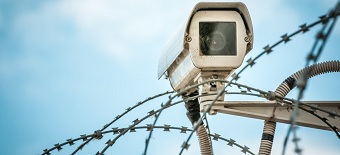Customs and Border Protection has deployed just 28% of its planned border technologies—despite receiving more than $743 million to do so since 2017, according to a recent audit.
The Homeland Security Department’s Office of Inspector General report concludes that in addition to issues like a lack of available technology solutions and security vulnerabilities in servers and workstations, CBP is “not well-equipped to assess its technology effectiveness to respond to these deficiencies.” The audit was released Feb. 23, shortly after President Joe Biden’s immigration bill—which calls for deployment of “smart technologies” at the border—was introduced into Congress.
Since 2017, CBP has worked on implementing border technologies such as integrated fixed towers for surveillance of remote areas, remote and mobile video surveillance systems, and small drones for aerial surveillance. The agency and U.S. Border Patrol also initiated modernization efforts to improve border security IT systems, infrastructure and equipment.
But “planned deployments of surveillance systems, infrastructure upgrades, and subterranean technology solutions were incomplete or behind schedule due to border wall construction delays, challenges identifying subterranean technology solutions, funding constraints, and shifting operational priorities,” the audit reads.
The development of underground sensing technologies has gained greater importance because the new border wall built during the Trump administration may lead to an increase in tunneling activities. But due in large part to lack of commercial use cases, underground sensing technology has been slow to develop, and even mature technology still has to be specialized to meet CBP’s needs.
In the meantime, surveillance technologies already in use have degraded, according to the audit. “For instance, CBP’s License Plate Reader program alerts checkpoints of incidents involving vehicles,” the audit reads. “However, limited bandwidth at checkpoint stations slowed information relay, and Border Patrol missed stolen vehicles that passed through checkpoints before on-site agents received alert notifications. More concerning, much of Border Patrol’s existing field technology has exceeded its useful life and has suffered from degraded performance and supportability.”








